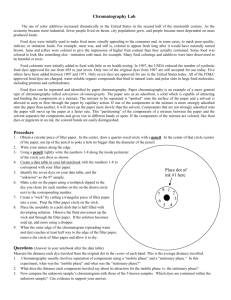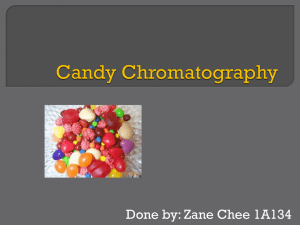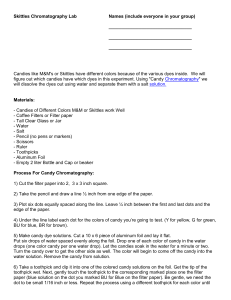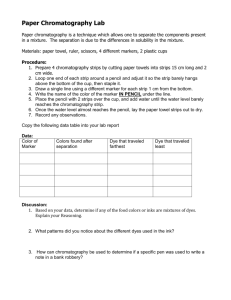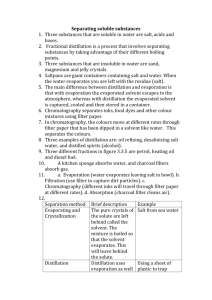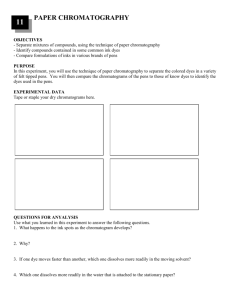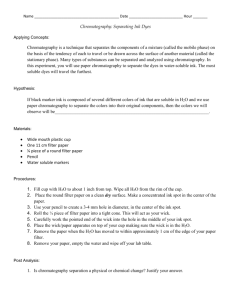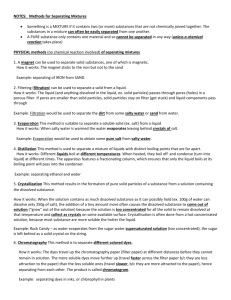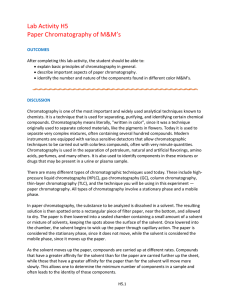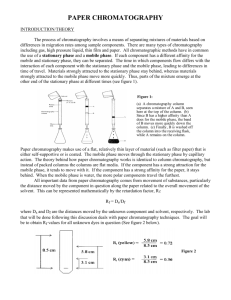Candy Chromatography information and question sheet
advertisement
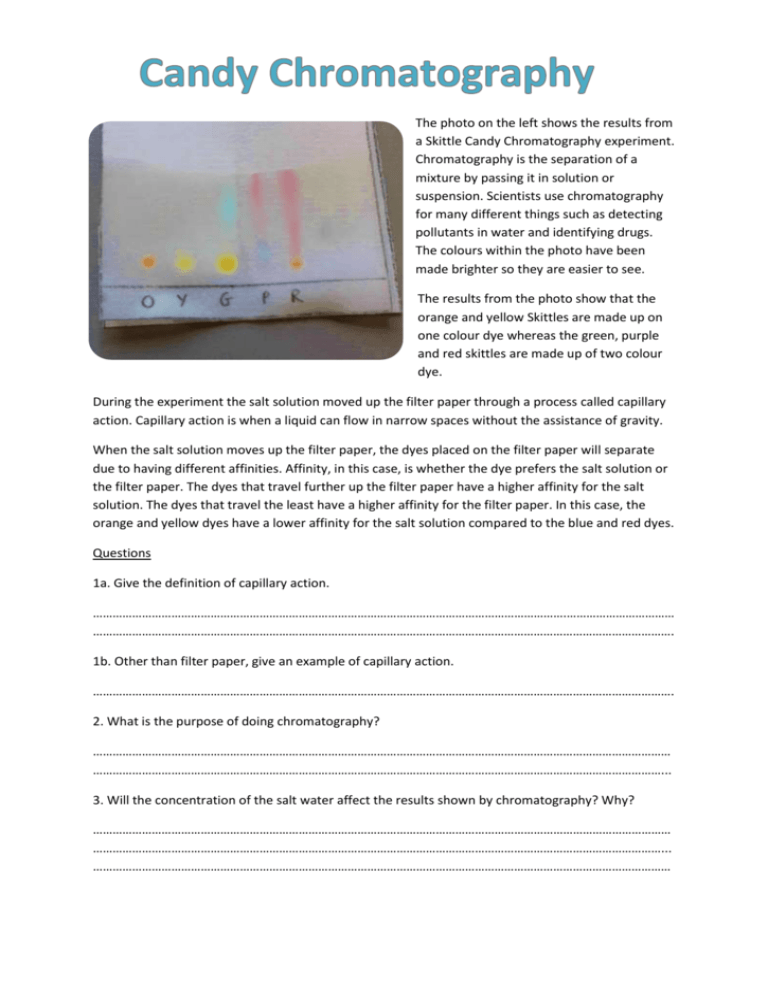
The photo on the left shows the results from a Skittle Candy Chromatography experiment. Chromatography is the separation of a mixture by passing it in solution or suspension. Scientists use chromatography for many different things such as detecting pollutants in water and identifying drugs. The colours within the photo have been made brighter so they are easier to see. The results from the photo show that the orange and yellow Skittles are made up on one colour dye whereas the green, purple and red skittles are made up of two colour dye. During the experiment the salt solution moved up the filter paper through a process called capillary action. Capillary action is when a liquid can flow in narrow spaces without the assistance of gravity. When the salt solution moves up the filter paper, the dyes placed on the filter paper will separate due to having different affinities. Affinity, in this case, is whether the dye prefers the salt solution or the filter paper. The dyes that travel further up the filter paper have a higher affinity for the salt solution. The dyes that travel the least have a higher affinity for the filter paper. In this case, the orange and yellow dyes have a lower affinity for the salt solution compared to the blue and red dyes. Questions 1a. Give the definition of capillary action. ……………………………………………………………………………………………………………………………….…………………………… ……………………………………………………………………………………………………………………………………………………………. 1b. Other than filter paper, give an example of capillary action. ……………………………………………………………………………………………………………………………………………………………. 2. What is the purpose of doing chromatography? …………………………………………………………………………………………………………………………………………………………… …………………………………………………………………………………………………………………………………………………………... 3. Will the concentration of the salt water affect the results shown by chromatography? Why? …………………………………………………………………………………………………………………………………………………………… …………………………………………………………………………………………………………………………………………………………... ……………………………………………………………………………………………………………………………………………………………
